Use of technologies to improve healthcare in underserved communities around the world
Open Health Network
Session 169
The healthcare needs of people in underserved communities around the world are vast and urgent. Addressing these needs requires a multifaceted approach that includes improving access to healthcare services, addressing maternal and child health challenges, combatting infectious diseases, and strengthening healthcare infrastructure.
Technologies can play a crucial role in improving healthcare for people in underserved communities around the world. Here are some ways in which technologies can help:
Telemedicine: Telemedicine enables healthcare professionals to provide medical consultations, advice, and treatment remotely, using digital technologies such as video conferencing and messaging apps. This technology can be particularly beneficial for people living in remote areas with limited access to healthcare services.
Mobile Health (mHealth) Applications: mHealth applications allow patients to monitor their health, receive medical advice, and access healthcare services using mobile devices. These apps can be especially useful in underserved communities, where access to healthcare services may be limited.
Electronic Health Records (EHRs): EHRs can help healthcare providers to manage patient data and medical records more efficiently. This technology can enable healthcare providers to provide more accurate diagnoses and treatments, as well as facilitate better communication between healthcare professionals.
Wearable Devices: Wearable devices such as smartwatches and fitness trackers can help patients to monitor their health and wellbeing, including tracking vital signs such as heart rate and blood pressure. This technology can help patients to identify potential health issues early and take steps to address them.
Artificial Intelligence (AI): AI can help healthcare providers to identify patterns and trends in patient data, enabling them to make more accurate diagnoses and develop more effective treatment plans. AI can also be used to develop predictive models that can help healthcare providers to identify patients who are at risk of developing certain health conditions.
Blockchain: Blockchain technology can help to secure and manage patient data, improving data privacy and security. This technology can also enable patients to share their health data with healthcare providers securely, ensuring that healthcare professionals have access to the most up-to-date and accurate information.
Overall, technologies can be a powerful tool for improving healthcare in underserved communities around the world. By leveraging these technologies, healthcare providers can deliver better care to more people, regardless of their location or socioeconomic status.
In this session we will review existing and new technologies, discuss their use in healthcare and impact on health of people in underserved communities around the world. Review challenges and opportunities.

Tatyana Kanzaveli has gone from a programmer to senior executive at Big 5 to founder and CEO of a startup company along her 20 year career,recognized as a thought leader, mentor for her ability to guide Fortune 500 and startup companies through business challenges.
She’s worked for major companies like PricewaterhouseCoopers and Fujitsu and startups in the early days of the Web.
Tatyana has personally helped companies jump from 0 to millions in revenue even during the toughest economic times. She opened new verticals and markets.
Today she is the founder and CEO of Open Health Network, the startup in a Big Data, Blockchain and Artificial Intelligence in Healthcare space. PatientSphere by Open Health Network has been featured in Venture Beat, Mobile Health News, and other prominent publications.
She is a mentor at 500Startups and Richard Branson Entrepreneurs Centre and serves on boards for private companies. She also is licensee and organizer of highly notable TEDxBayArea conferences, she is a frequent speaker at US and International conferences on innovation, entrepreneurship and digital health.
Tatyana has been featured in the White House blog , spoke at the United Nations, presented at the first White House Demo Day hosted by the President Obama, did a TEDx talk; keynoted at WEBIT, WSIS and other international conferences.
Tatyana has been recognized as one of the top 10 Influential Women in Healthcare IT in 2015 and by Forbes as one of the top 50 women-led startup in tech founders. In 2022 Tatyana has been named as one of top 25 Women In AI in Healthcare and Pharma.
Tatyana was USSR chess champion, played in the same team with Gary Kasparov, she loves to cook and kayak.

Shuchi brings 20 years of Silicon Valley and Cross-border experience in various sectors, with a focus on Technology and Impact. She is currently the Global Head of Whitespace Intelligence at ServiceNow, where she focuses on co-innovation with the healthcare organizations around the world, among others, to solve for some of the biggest challenges faced by the industry. Shuchi has previously served as the GM for VentureBeat Transform and as the Head of GTM for HeadSpin, a google backed startup. Prior to that she was the Head of SAP.iO Foundry at SAP, a strategic program that invests in and accelerates Enterprise Software Startups. In her role she helped enterprise startups go to market with SAP, and some of SAP’s largest customers with their digital transformation. In her previous roles she has led operations, funding diligence & M&A for startups. Over the course of her career, she has worked with great entrepreneurs and mentored and advised Startups out of Startup Weekend, Women 2.0, Founder Labs, Nasdaq Entrepreneurial Center, and others. She is a big advocate of anti-recidivism, inclusion and has worked with the likes of UCLA, Anti-Recidivism Coalition, and the Tech/Startup ecosystems to create opportunities for at-risk and underserved communities. She was named a Digital Leader by the United Nations Foundation.

Katerina is a Communications professional with a passion for humanitarian work and a specific focus on serving underprivileged populations. She currently works with the World Health Organization on various digital projects, leveraging technology to make a positive impact in the world and help people live longer, healthier lives.
Katerina is approaching challenges with creativity and fresh ideas. She is committed to making a positive impact in the world through her work, and she believes that by using technology and innovation, we can make a difference in the lives of people who need it most.
In the past, she has worked with several notable United Nations agencies, including the United Nations Office at Geneva, the International Telecommunications Union (ITU), and the United Nations Institute for Disarmament Research (UNIDIR).
Katerina has a background in the Arts, owns more books than she can count and aspires to publish her own book soon.

Simone St. Claire is a public health expert and World Health Organization consultant.
-
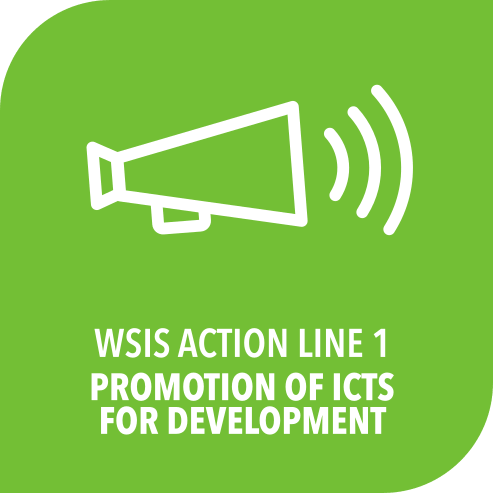 C1. The role of governments and all stakeholders in the promotion of ICTs for development
C1. The role of governments and all stakeholders in the promotion of ICTs for development
-
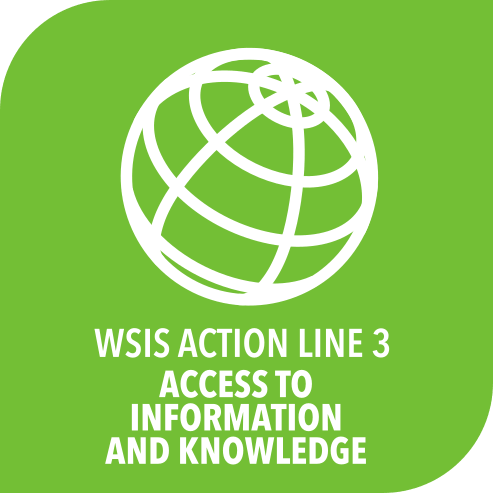 C3. Access to information and knowledge
C3. Access to information and knowledge
-
 C4. Capacity building
C4. Capacity building
-
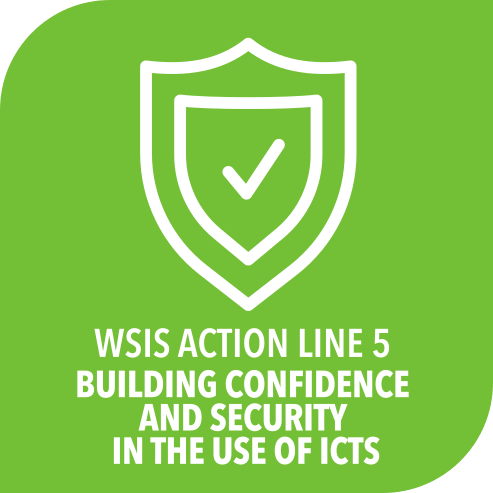 C5. Building confidence and security in use of ICTs
C5. Building confidence and security in use of ICTs
-
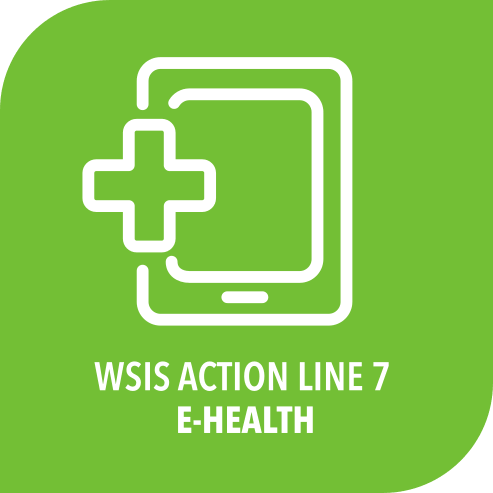 C7. ICT applications: benefits in all aspects of life — E-health
C7. ICT applications: benefits in all aspects of life — E-health
The topic of technologies for health of people in underserved communities around the world is closely connected to several of the World Summit on the Information Society (WSIS) action lines, which were established in 2003 to promote the use of information and communication technologies (ICTs) to achieve development goals. Here are some of the ways in which the topic of technologies for health connects to the WSIS action lines:
C1: The role of public governance authorities and all stakeholders in the promotion of ICTs for development: This action line recognizes the importance of multi-stakeholder partnerships in promoting the use of ICTs for development. In the context of healthcare technologies for underserved communities, partnerships between healthcare providers, governments, and technology companies are essential for identifying and addressing healthcare needs.
C3: Access to information and knowledge: This action line recognizes the importance of ensuring that all people have access to information and knowledge. In the context of healthcare technologies for underserved communities, this means ensuring that patients have access to reliable health information and that healthcare providers have access to the latest medical research and best practices.
C4: Capacity building: This action line recognizes the importance of building the capacity of individuals and institutions to use ICTs effectively. In the context of healthcare technologies for underserved communities, capacity building may involve training healthcare providers and community members to use digital health tools and telemedicine services effectively.
C5: Building confidence and security in the use of ICTs: This action line recognizes the importance of ensuring that ICTs are used in a secure and trustworthy manner. In the context of healthcare technologies for underserved communities, this means ensuring that patient data is kept secure and that healthcare providers are trained to use technology in a responsible and ethical manner.
Overall, the topic of technologies for health of people in underserved communities around the world is closely connected to several of the WSIS action lines, which highlight the importance of multi-stakeholder partnerships, access to information, capacity building, and security in the use of ICTs for development. By leveraging these action lines, governments, healthcare providers, and technology companies can work together to improve healthcare outcomes in underserved communities around the world.
-
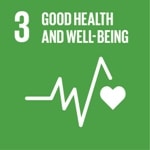 Goal 3: Ensure healthy lives and promote well-being for all
Goal 3: Ensure healthy lives and promote well-being for all
-
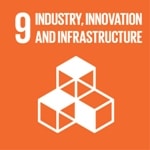 Goal 9: Build resilient infrastructure, promote sustainable industrialization and foster innovation
Goal 9: Build resilient infrastructure, promote sustainable industrialization and foster innovation
-
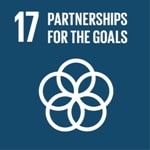 Goal 17: Revitalize the global partnership for sustainable development
Goal 17: Revitalize the global partnership for sustainable development
The related Sustainable Development Goals (SDGs) for technologies for health of people in underserved communities around the world include:
SDG 3: Good Health and Well-being: SDG 3 aims to ensure healthy lives and promote well-being for all at all ages. It includes targets such as reducing maternal and child mortality, combating communicable diseases, and improving access to healthcare services. Technologies for health can play a critical role in achieving these targets by improving access to healthcare, enhancing disease surveillance, and promoting healthy behaviors.
SDG 9: Industry, Innovation, and Infrastructure: SDG 9 aims to build resilient infrastructure, promote sustainable industrialization, and foster innovation. It includes targets such as increasing access to affordable and reliable internet, promoting research and development, and enhancing scientific and technological capabilities. Technologies for health can contribute to achieving these targets by facilitating innovation in healthcare delivery, improving data collection and analysis, and promoting the development of low-cost medical technologies.
SDG 17: Partnerships for the Goals: SDG 17 aims to strengthen the means of implementation and revitalize the global partnership for sustainable development. It includes targets such as increasing the availability of technology transfer and capacity-building for developing countries, enhancing policy coherence for sustainable development, and increasing the mobilization of financial resources. Technologies for health can support these targets by facilitating partnerships between governments, healthcare providers, and technology companies, and by promoting technology transfer and capacity-building in underserved communities.
These SDGs are related to technologies for health of people in underserved communities around the world because they recognize the critical role that technology can play in improving healthcare outcomes and achieving sustainable development goals. Technologies for health can help to increase access to healthcare services, enhance disease surveillance, promote healthy behaviors, facilitate innovation in healthcare delivery, and promote the development of low-cost medical technologies. By contributing to the achievement of these SDGs, technologies for health can help to promote sustainable development and improve the lives of people in underserved communities around the world.